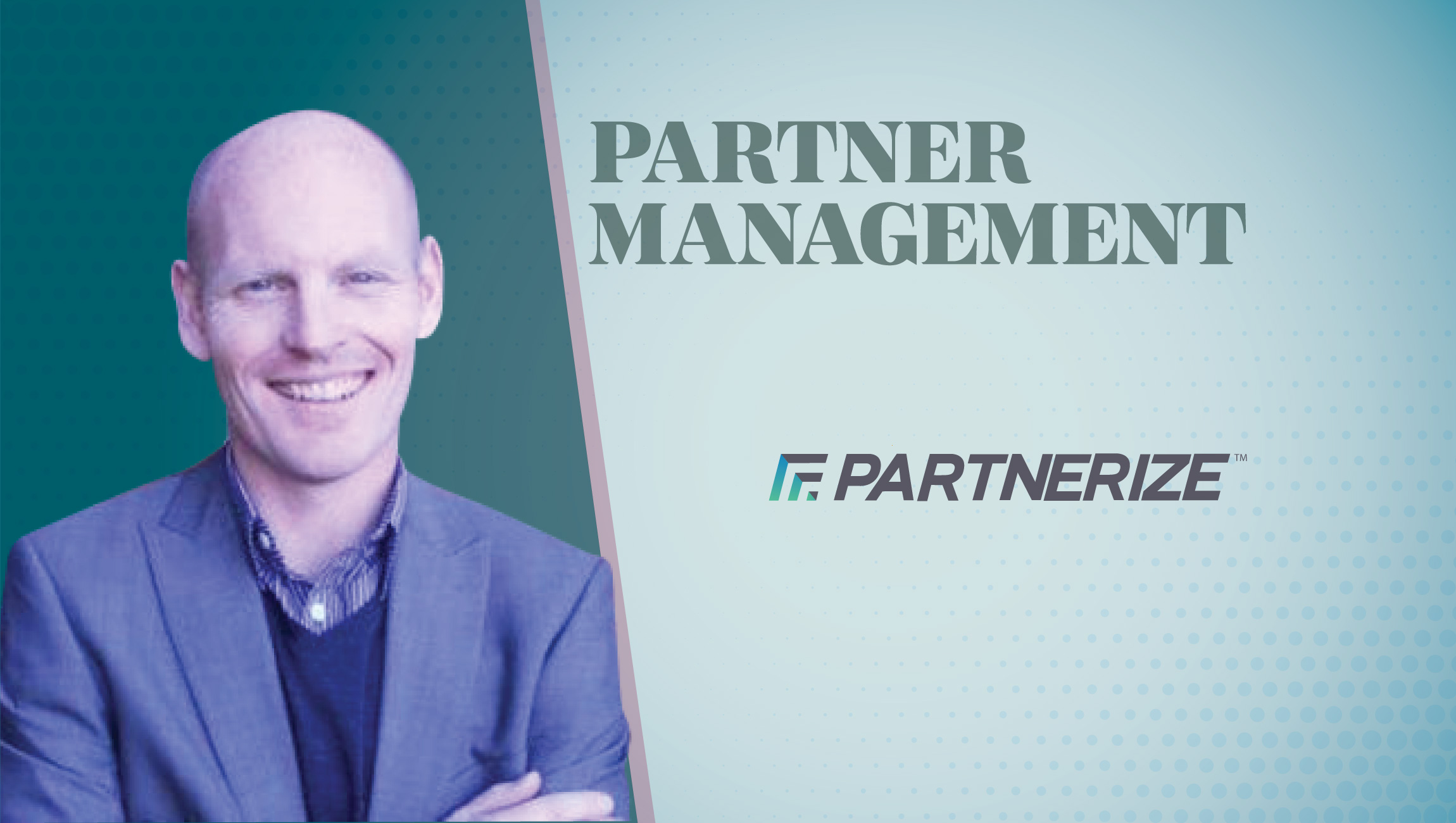You’ve been active in the technology arena all over the world. Could you tell us about your background?
Yes, sometimes it’s hard for me to answer “where are you from” because I have lived and worked in the UK, USA, Southeast Asia and Australia, and I spend a great deal of time in Japan.
I grew up in the UK, but have been working internationally for most of my life. My tech experience started with QAS, which was then acquired by Experian in the US. Then I returned to London to work for buy.at, then AOL, when they acquired the network. From there I worked as Commercial Director for MySpace & IGN, and then Criteo in Australia. I joined Partnerize in Australia just over 7 years ago and recently spent 2 years running Sales and Business Development for the company in San Francisco and New York.
The only common thread across my career is that, wherever I have been, my last name has always been a conversation piece.
You’ve been involved in Partner Marketing for some time. What about the Australian and SEA markets makes them suited to Partner Marketing?
It’s interesting – I have been active in tech for two decades, but no segment of the industry has been as fast-growing and dynamic as Partner Marketing. The industry has been growing in a host of markets globally. But growth has been particularly strong in Southeast Asia, Japan, and Australia. In all of these regions, there is a strong culture of accountability, meaning a guiding belief that Marketing investments must be both carefully measured and directly impact brand sales.
Partner Marketing is a natural channel in that sort of culture because the ROI has always proven to be so strong. In a variety of studies, the Return on Ad Spend (ROAS) for partnership has been shown to be 12:1, 15:1, 18:1 – and higher. We have a number of clients in APAC getting more than 50:1 ROAS. This type of financial return really enables large brands to have this channel always on, which is one of the reasons this has always been a proven channel for many years.
Partnership really took off in Australia and Japan beginning about 5 years ago and has now grown to a nearly ubiquitous channel. Almost every retailer, bank, telco, and travel company, etc. has some sort of a partnership program. This can be Affiliate Marketing, an influencer program, performance media program, brand to brand, or any of a half dozen other types of partnership. And sometimes all of the above!
In Southeast Asia, the market really started to take off about three years ago, when leading retailers and travel brands started to recognize that this channel could be a game-changer. Part of it has to do with the rapid growth of internet access in all Southeast Asian markets, but particularly Indonesia and Thailand. Another big driver is the strong economic growth in many of the countries in that region.
Southeast Asian companies are also very focused on measurement and transparency, which is always good for partnership. As we all know, there are big economic differences between some of the wealthier countries in the region, and those that are earlier in their economic growth cycle. Further, national borders add challenges to growing a business in the region. Partnerships with local publishers and brands are a great way to cost-effectively introduce a brand or product to national markets.
Years ago, the SEA market was dominated by non-transparent networks and disparate measurement models. But all that has changed as Partnerize and companies like us have made it easy to understand where your partnerships are running online, how to detect possible fraud, and most importantly, how to measure all mobile conversions, including those that take place in apps.
What have you learned about how PMartner marketing varies between SEA, ANZ, and more mature partner markets like Japan? What do people need to know to succeed in each region?
I am responsible for our company’s efforts in all of those regions. Of the three, Japan is currently the largest by revenue, though Southeast Asia may surpass it in the not too distant future..
In Japan, partnership has been a popular Sales channel for both finance businesses and retail brands. Digital access here is nearly universal, which makes digital Partner Marketing easy to field and measure. Agencies play a major role in managing partnerships, as they do in most areas of Japanese Marketing. Credibility is an important selling point in this market, and brand leaders are passionate about what their partner relationships “say” about their brands. As in many markets, Japanese partner and affiliate leaders are demanding more data and transparency, and real-time access to performance insights and optimization tools.
In Southeast Asia, the rise of well-funded start-ups and data-driven Marketing has helped propel outstanding partner channel growth in the region. Historically, partnership in Southeast Asia was dominated by affiliate marketing, with “blind networks” controlling the bulk of spend. For some brands, that’s the worst kind of “spray and pray” approach imaginable. But whether a brand is a relatively small start-up or a digital ‘Unicorn’, Southeast Asian brand teams and their investors like the pay-for-performance model of partnership, coupled with its outstanding return.
Across most countries in Southeast Asia, there is a growing demand for data and transparency. Most Southeast Asian marketers are digital and mobile-natives, and expect strong performance and reporting as table stakes. Finally, partners help brands enter the many national markets in the region, and provide instant credibility for brands with which consumers aren’t very familiar.
The first thing you need to remember about Australia is that the market is MUCH smaller than Southeast Asia. There 25 million Australians versus 640 million Southeast Asians. Most retail categories in Australia are dominated by a couple of large players, which means that companies are constantly looking to maximize the accountability of every marketing dollar. Further, there are a solid number of large, well-established partners in the market, meaning that partnership can be a great way to drive scale against consumers.
Amazon is also an important recent addition to the Australian retail market, and I think that has helped accelerate partnership as a channel because retailers are anxious to maximize their reach and connection with Australian consumers before they get seduced by the “smile”. Until 2018, they only sold books in-region. Now they are selling most everything, and partnership has been one of the reasons why Amazon’s market penetration is a bit more modest than expected in Australia.
What are tech buyers looking for in SaaS and other MarTech offerings?
Data-driven is the watchword concept for marketers today. Brands are very interested in gleaning as much insight as possible from their customers and programs. I think there’s also something to the idea that a new generation of digital natives are now at the helm of many Marketing organizations. These teams demand real-time access to data, want powerful tools to gain insights from it, and expect seamless passing of data between core platforms running the business.
In the partnerships industry, there’s been a strong shift away from “override” based payment models towards fixed, predictable payment schemes. This reflects the growing sophistication of the Marketing teams and the need to provide clarity and performance.
Customers are demanding language localization, and expect customer service and support to be delivered in-region, rather than having to submit issues to a queue that get answered from thousands of kilometers away, outside of Asian work hours. One key reason why we’ve been successful in Asia is that we have dedicated teams here who work directly with brands at hours that are convenient to those clients.
We also see a lot of interest in leveraging the evaluation processes of other companies in their own decision-making. When we’ve won large clients, we almost always see a stronger interest in our solutions from other major advertisers in the region. Perhaps it’s because companies face such specific challenges here, so success for one brand makes it easy for another brand to make a choice in the future.
Overall, we have also benefited from being in the region for 6+ years and so naturally, you build up a wealth of knowledge about the idiosyncrasies of the country, people, culture and how business is done. You also get to build invaluable experience and trust, which are both critical to being able to do business successfully in these remote, fragmented, high growth markets.
How does a tech stack in SEA differ from those in other regions?
Well, every company’s stack is different, but I do see some commonalities in Southeast Asia. First, there is a preference to buy versus build. In rapidly growing and changing markets, most brands are unwilling to wait two years for the development of home grown solutions. For these firms, web-based SaaS platforms are preferable from both cost and time-to-value perspectives.
As I mentioned earlier, interoperability is also a big deal. Brands need their various platforms to work together. They want access to great APIs to port data and insights from one tool to a CDP, DMP, or BI toolset.
We also hear lots more questions about scalability in this region. It’s not surprising given the growth characteristics of this market. Almost 60 million new consumers have come online in the region in the past three years. And the size of the e-commerce market in the region is expected to triple in the next 6 or so years. No one wants to have to migrate from one platform to another for scale reasons. At Partnerize, we have developed specific materials focusing on our ability to scale seamlessly because advertisers are so focused on this metric.
The other big difference I see is that while in the US and EMEA there’s lots of talk about thinking “mobile-first,” in this market it’s more appropriate to recognize that digital IS mobile here and that any solution needs to work across all mobile use cases.
What’s the MarTech scene like in SEA? What should newcomers keep in mind?
This is a value-oriented market. A solution doesn’t necessarily have to be rock-bottom-priced but rather its long-term efficiency and short-term time-to-value are most important. People will pay for great data and intelligent insights.
Marketers here are also very sophisticated. When we discuss our solution with brand prospects, for example, marketers ask some of the most sophisticated and specific questions of any region in the world. They have their fingers on the pulse of the industry, and often ask about what trends we are seeing in more “mature” markets, so they can implement them quickly.
How should international companies approach expansion into SEA and as part of that advice, what would you say to B2C companies as compared to B2B companies?
This is an absolutely enormous question. Let me try and take it in stages.
First, there is no substitute for rich market knowledge. SEA is unique in many ways, and it is also very heterogeneous. Singapore and Vietnam, for example, have strongly different marketing environments. We work with lots of international customers and the ones that do best have done their homework about market trends and trends by country and category.
You cannot make a lot of “assumptions” here. For example, credit card incidence is much lower in some parts of Southeast Asia than in EMEA, North America, and places like Japan and South Korea.
Similarly, it’s important to recognize that while your company may think of it as one region, it’s actually eleven different countries, each with its own laws, business practices, customs, and culture. What works in Singapore may not work across the border in Malaysia.
To reiterate an earlier point, the Internet IS mobile here. I won’t say that desktop-based Marketing experiences don’t matter, but I would argue that in Southeast Asia, they don’t matter very much. Maybe that’s too strong. I guess what I really mean is, get mobile right here, and you’ve got your marketing right.
Cultural awareness is also essential. To quote my American colleagues, you need boots on the ground that understand the regional culture and are adept at Marketing in ways that appeal to the broadest possible audience without causing distrust among others. Working with partners here can be a big help in SEA because these partners already have pre-established relationships with consumers.
For B2B, it is important to recognize that there is a shortage of marketers in most countries in the region. Automation is critical because brands here must make the best possible use of limited resources. Further, burning a bridge here can have years worth of repercussions. Word travels fast in the tight-knit Southeast Asian business communities, so mistakes can be costly.
Marketing fraud is a hot topic, especially in Southeast Asia. How prevalent is fraud in these markets relative to the rest of the world, and why?
Marketing fraud is widely believed to be more common and costly in this region than in most others. I think it’s because the market is large and fast-growing. Fraudsters go where the money is. Further, because Marketing teams are lean, it may be possible to perpetrate fraud more easily here. At least for a time. Also, while as I mentioned the market is moving away from things like “blind networks” and toward transparency, those dark places leave the door open for more fraud.
Consumer fraud is also more common here. Sometimes it takes a while before “new” internet users are aware of the types of threats that are out there. Further, while there are tens of millions of smartphones here, the economic realities of these markets mean that many consumers don’t have devices that are on the latest OS versions.
Marketers here are definitely fighting back, though, searching for anti-fraud capabilities in their MarTech stack and anti-fraud tools that can detect and prevent fraud in multiple channels.
What strategies should companies use to detect and prevent Marketing fraud across APAC?
Choose best-of-breed solutions that think of fraud protection as an essential and not “something extra.” Learn about the anti-fraud companies that can help protect your business across multiple Marketing channels. Emphasizing Marketing tactics and buying models that are less game-able, like CPA versus CPM or CPC. Ensure that you have quality tools that enable you to assess sales data and key performance metrics so you can prevent and/or limit the fraud in the first place.
Pete Mycock is GM APAC for Partnerize. Pete has 20 years of experience building and driving accelerated growth in enterprise technology organizations across North America, Europe, and APAC. Based in San Francisco, Pete is responsible for revenue growth in the US.
Partnerize helps the world’s leading brands build powerful business partnerships that drive extraordinary business growth. The Partnerize Partner Management Platform (PMP) is an end-to-end, SaaS-based solution for forming, managing, analyzing, and predicting the future results of partner marketing programs using artificial intelligence. Hundreds of the world’s largest brands leverage our real-time technology to Partnerize their businesses. In fact, the Partnerize PMP drives and manages more than $6B in partner programs and financial exchanges across 214 countries and territories worldwide. Partnerize is backed by top-tier investors, including Mithril, Greycroft Partners and DN Capital.
Major brands in travel, retail, finance, and digital content rely on the Partnerize platform to drive customer acquisition, revenue increases and profitability gains through their online marketing channels. This includes the ability to optimize campaign performance, deploy creative, managing partner and product spend, adjust commission rates and run promotions on the fly, easily integrate into existing workflows and systems via the open architecture as well as process partner payments globally within one day.











